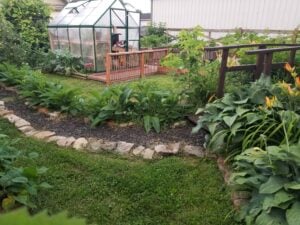On today’s podcast episode I have a conversation with Steve Dinicol, a homesteader on 133 acres in British Columbia Canada. Steve and his wife work full-time jobs and still manage to operate and expand their homestead although expand too quickly at times as Steve will confess.
Steve and I discuss:
- What led him down the homesteading path
- Raising cattle
- Raising sheep
- Raising chickens for eggs and meat
- Animal processing
- Deer hunting
- Gardening in a northern climate
- Foraging for mushrooms
- His newly planted fruit tree orchard and berry bushes
- Perennial vegetables
- Future plans for their homestead like bees, goats, rabbits, and chicken expansion
- Advice for beginner homesteaders
Resources and Links from today’s episode:
- Anyone Can Build a Tub-Style Mechanical Chicken Plucker – Paperback by Herrick Kimball
- Article I mentioned –WHAT DOES IT FEEL LIKE TO KILL A CHICKEN?



